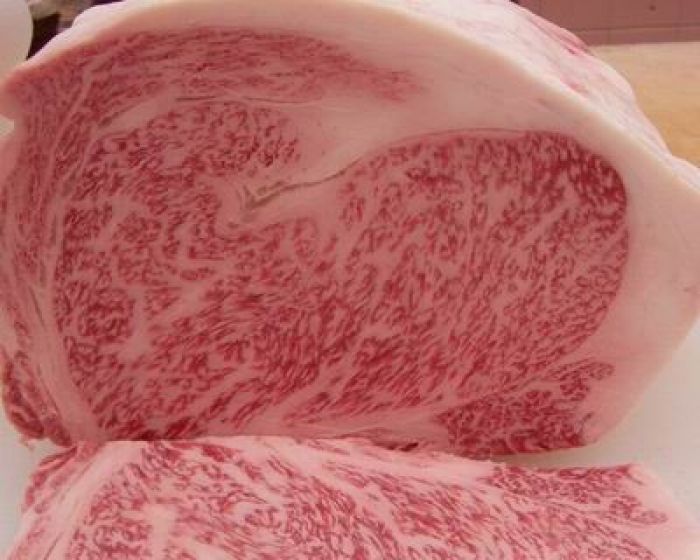
Steak is one of the most basic items on the menu, a go-to option for those who want to have a good meal without getting too fancy. However, the emergence of boutique beef and all the gourmet twists chefs have resorted to in their drive to modernize steakhouse fare have led to more options than you can shake a steak knife at. Home cooks are faced with a similar choice at the meat shop since any quality butcher shop worth its chops will give you options enough to get your head spinning. To help navigate the maze that meat-and-potatoes fare has transformed into, here are some of the basic choices you face when either buying a steak or eating at an upscale steakhouse.
Heritage, Angus, or Wagyu
It used to be that Black Angus beef was where it was at. The combination of tenderness and good marbling led to this breed being one of the most popular offerings at steakhouses around the world. But then there was a backlash against the homogenization of tastes around the globe, and environmentalists protested the lack of genetic diversity in a world that depended on a small amount of livestock breeds for most of their food supply. And so chefs started emphasizing beef from heritage cattle. Ranging from British and Scottish offerings like Galloway and Lincoln Red to French breeds like Charolais and Limousin, these breeds tend to be more assertive in taste and less marbled than Black Angus.
On the opposite side of the spectrum from heritage beef is wagyu. Wagyu simply means “Japanese cow” and usually refers to the Tajima breed or crosses of this breed with Black Angus. In addition to a milder, more subtle flavor profile, the main characteristic of this breed is an extraordinary amount of marbling. So much so, in fact, that the Japanese-raised pure strains found in the Japanese market have been described as composed of more fat than meat and are generally considered too rich for the Western palate. Those wanting to try wagyu should familiarize themselves with the Wagyu marbling scale, where 5 is the level of most USDA prime beef, and 12 is the highest score, with prices rising accordingly. Japanese wagyu is usually marketed according to its place of origin, much like wine from France, and Mishima, Matsuzaka, and Kobe beef are some of the most prestigious appellations. The occasional appearance of BSE in Japan has led to the periodic banning of Japanese wagyu in the US and other countries, although this does not stop some purveyors from dealing in smuggled meat or from passing off wagyu from other sources as Japanese, with an accompanying premium in price. Diners who want to sample Japanese wagyu should therefore check if it isn't currently banned in their location.
Grassfed or Grain
Grain-fed beef is the choice if you're not too environmentally conscious and want the maximum in tenderness and marbling. Environmentalists aren't fans because of the toll that grain-feeding cattle exacts in terms of resources, the health of the cattle, and greenhouse gas production.
Grass-fed beef, on the other hand, is touted as more environmentally sound and leaner, though the taste is a bit divisive since some people find the taste unpleasant while others enjoy the slightly gamy flavor. Heritage beef breeds tend to be grassfed as well, so the labels often go together in restaurant menus and butcher shop labels.
Wet-Aged, Dry-Aged, or Fresh Beef
Some breeds of heritage beef are traditionally cooked without aging, like the Maremma beef used in bistecca alla fiorentina, but the majority of cuts used in steakhouses go through some form of aging. Aging has a huge effect on the quality of the meat, and while wet-aging—aging the beef while it's sealed in plastic—tenderizes the steak by allowing the enzymes in the meat to act on the muscle fibers, it's dry-aging that adds the blue-cheese-like flavor that gourmets and steak mavens rave about.
Dry-aging involves basically allowing the outside of the meat to dry out and form a crust, not only tenderizing the meat and developing the aged flavor but also concentrating the juices and their corresponding flavors. Unfortunately, the process results in a loss of weight approaching or exceeding 30% after moisture loss and trimming of the dried-out crust, and the price of dry-aged beef reflects both the prolonged storage time and this loss of salable weight. Also, not everyone is a fan of the flavor dry-aging imparts, and it can be an acquired taste even for adventurous souls. With this in mind, the trend to use longer dry-aging times, as seen in its extreme form in Mario Batali's Carnevino, is something that those new to the dry-aged flavor should approach with caution, and any cut of meat aged for over 40 days should probably be left to the hard-core beef aficionados.
Brandon Peters is an entrepreneur, writer, amateur cook, and foodie. He usually rates eating establishments at good hotels by ordering classic dishes.

Wagyu














